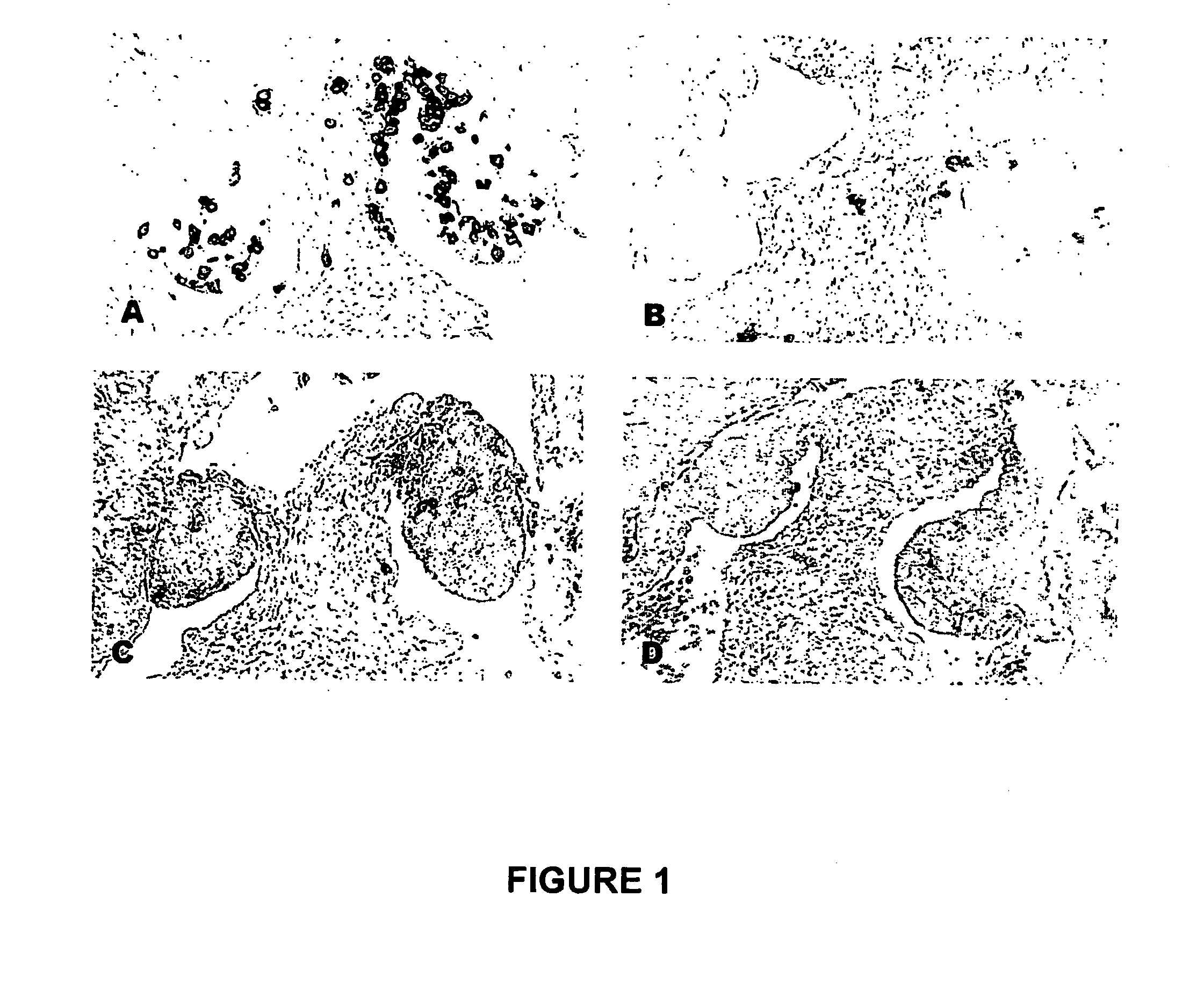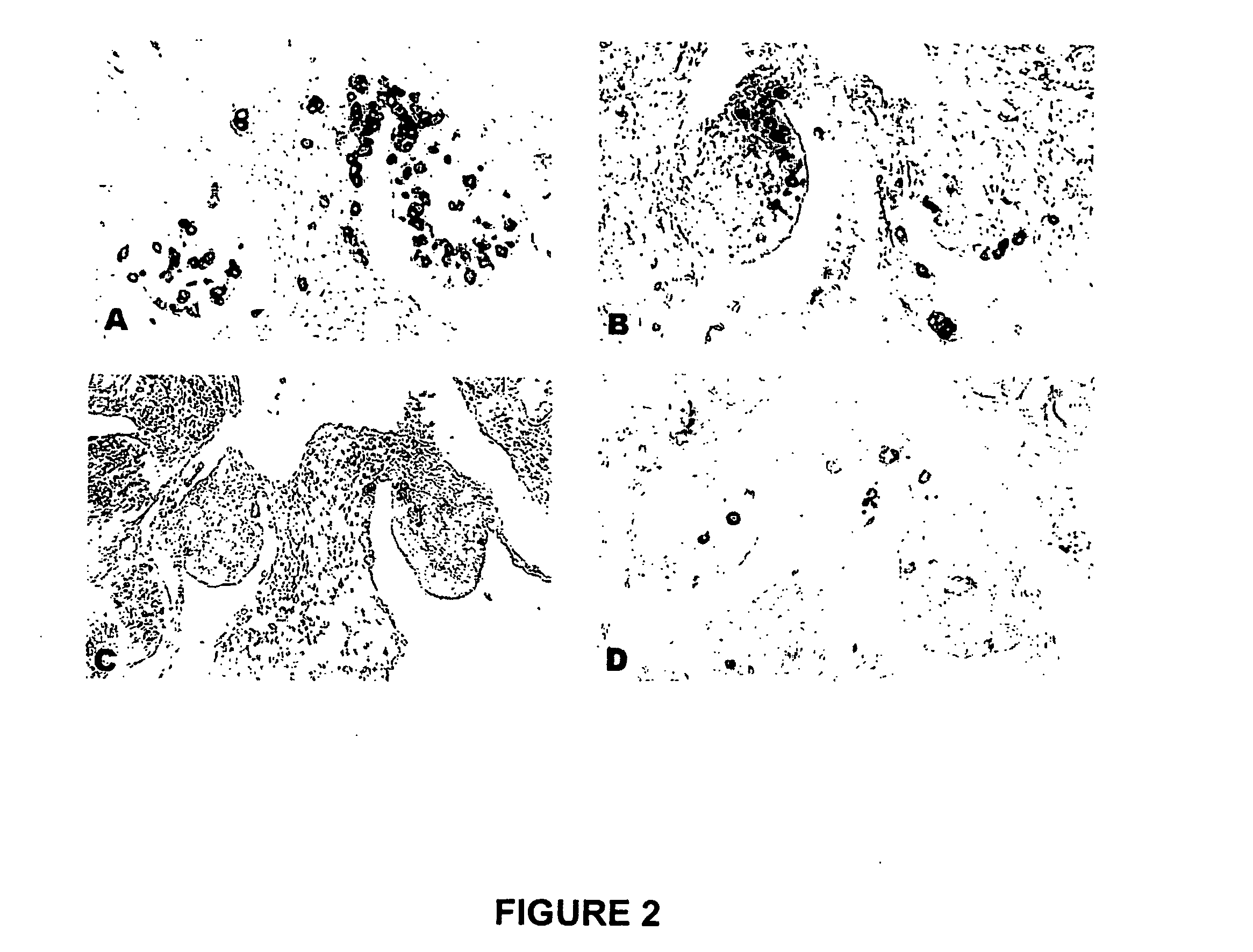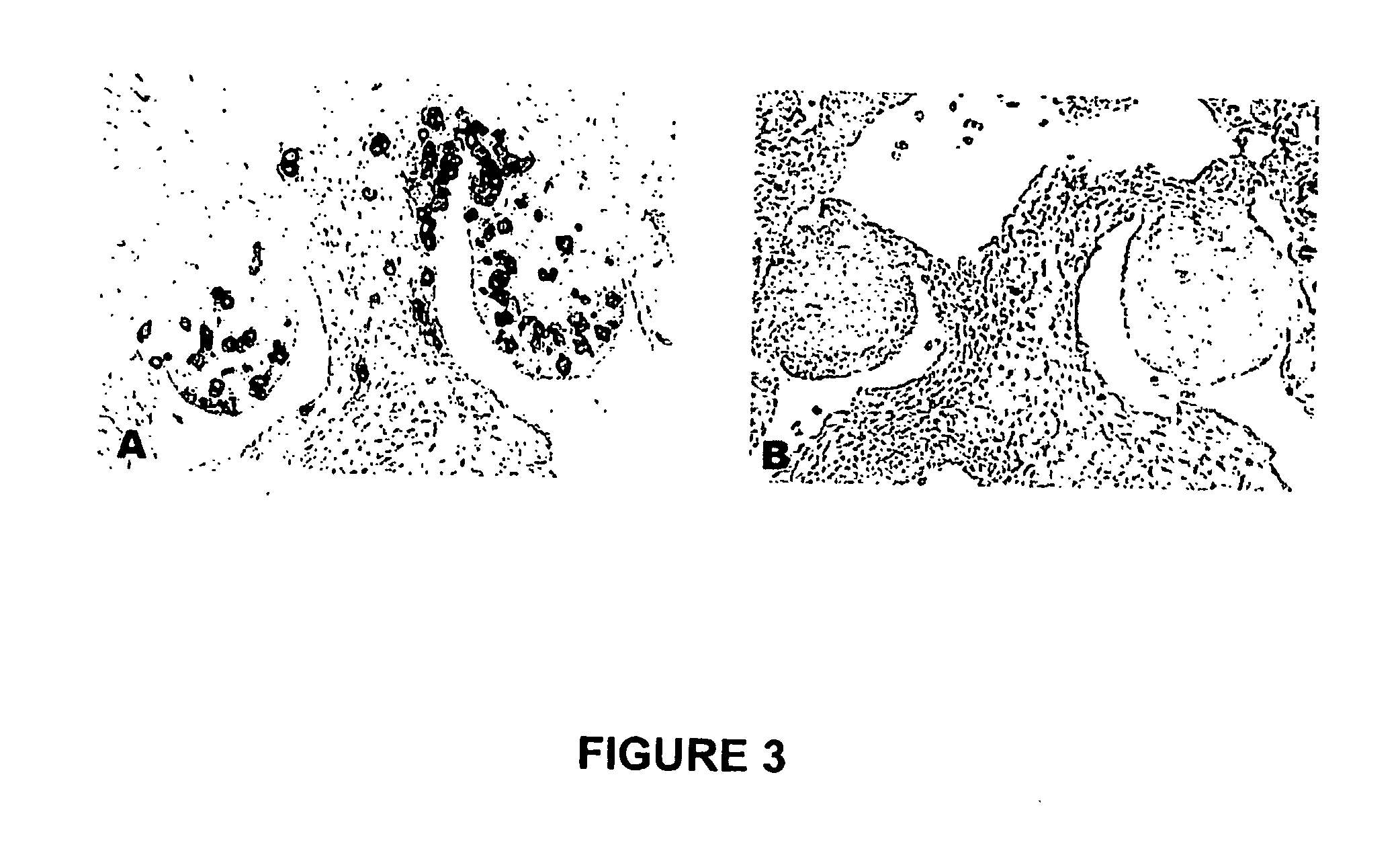Depletion of endogenous primordial germ cells in avian species
a technology of primordial germ cells and avian species, which is applied in the field of modulating the number of primordial germ cells in an avian, can solve the problems of limiting the practical use of uv light as a means unable to irradiate the germinal crescent, and limited application of continuous low-level gamma irradiation to reduce endogenous pgc numbers, so as to achieve the effect of increasing the number of primordial germ cell
- Summary
- Abstract
- Description
- Claims
- Application Information
AI Technical Summary
Benefits of technology
Problems solved by technology
Method used
Image
Examples
example 1
Immunization of Female Birds
[0133] Antigenic peptide regions of chicken DAZL and chicken VASA homolog proteins were identified, synthesized, and conjugated to keyhole limpet hemocyanin (KLH). Selected peptides are shown in Table 1.
TABLE 1Selected Peptides for Conjugation and Immunizationof Laying Hens Against Chicken VASA and DAZLDesignationAmino Acid SequencesLocation of PeptideVASA-NSRP SSP LSG FPGamino acids 42-57RPN S (SEQ ID NO: 3)of the chicken VASAhomologue(CVH; GENBANK ®Accession No. BAB12337)VASA-CNPR EMR MSY SETamino acids 645-660TFK S (SEQ ID NO: 4)of the chicken VASAhomologue(CVH; GENBANK ®Accession No. BAB12337)DAZL-NSAN AEA QCG SISamino acids 2-17EDN TH (SEQ ID NO: 7)of the chicken DAZLpolypeptide(GENBANK ®Accession No. AAO26019)DAZL-CSQE DYF RER AHHamino acids 266-281FRK G (SEQ ID NO: 8)of the chicken DAZLpolypeptide(GENBANK ®Accession No. AAO26019)
[0134] Stock solutions (1,000 μg / ml) of the various conjugated peptides were maintained at 4° C. Immediately prior to ...
example 2
Evaluation of PGCs in Stage 27 Embryos
[0140] After immunization, eggs were collected, stored for a maximum of 14 days, and incubated to reach stage 27 (H&H). Stage 27 (H&H) embryos were sacrificed and fixed in 4% paraformaldehyde overnight at 4° C. The embryos were then embedded in paraffin and serially sectioned across the gonadal region at 7 μm thickness. The slides containing gonadal region were selected from other slides and the PGCs in gonads were identified by immunohistogical staining using monoclonal antibody MC-480 (Developmental Studies Hybridoma Bank, The University of Iowa, Iowa City, Iowa, United States of America) that recognizes the stage-specific embyonic antigen-1 (SSEA-1). The immunohistogical staining was carried out using avidin-biotin conjugated alkaline phosphatase (VECTASTAIN® ABC-AP kit, Vector Laboratories, Burlingame, Calif., United States of America) and BCIP / NBT (5-bromo4-chloro-3-indolyl phosphate / nitroblue tetrazolium) substrate (Amresco, Inc., Solon, ...
example 3
Repopulating Germ Cells in Treated Embryos
[0146] Birds produced in accordance with Examples 1 and 2 are used as recipients and administered exogenous PGCs from donor birds.
[0147] A. Preparation of Donor Cells:
[0148] Gonads from 5.5-day chicken embryos are collected in PBS. The isolated gonads are pooled in 250 μl of 0.02% EDTA in a 35 mm petri dish and are incubated at 37° C. for 10 minutes. The gonads are teased with a needle in the petri dish and are incubated at 37° C. for 5 more minutes. The cells are collected in DMEM containing 20% FBS and centrifuged at 450 g for 5 minutes. The cells are washed and resuspended in DMEM. The cells number and viability are determined. The final concentration of viable cells is adjusted to about 1000 cells / μl.
[0149] B. Preparation of Recipient Embryos:
[0150] Recipient chick embryos are prepared as described in Examples 1 and 2. The embryos are placed in the incubator until Stage 14-17 (H&H).
[0151] C. Injection of Donor PGCs into Recipient E...
PUM
| Property | Measurement | Unit |
|---|---|---|
| Concentration | aaaaa | aaaaa |
Abstract
Description
Claims
Application Information
 Login to View More
Login to View More - R&D
- Intellectual Property
- Life Sciences
- Materials
- Tech Scout
- Unparalleled Data Quality
- Higher Quality Content
- 60% Fewer Hallucinations
Browse by: Latest US Patents, China's latest patents, Technical Efficacy Thesaurus, Application Domain, Technology Topic, Popular Technical Reports.
© 2025 PatSnap. All rights reserved.Legal|Privacy policy|Modern Slavery Act Transparency Statement|Sitemap|About US| Contact US: help@patsnap.com



